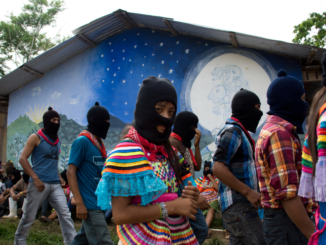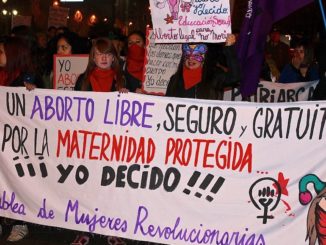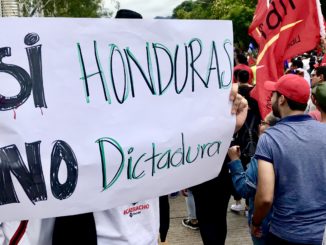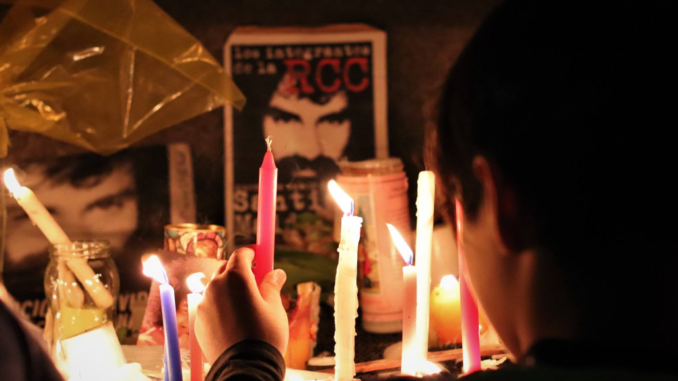
At the center of the forced disappearance of Santiago Maldonado and his subsequent death lay a global fashion company, Argentina’s long-standing extractive model, and the repression of displaced Indigenous communities.
Santiago Maldonado is the name that shook Argentina since the first day of August. The 28-year-old disappeared during a crackdown on a Mapuche community in Patagonia by the gendarmerie, or border patrol. In a country with 30,000 disappeared people as a result of a civil-military dictatorship, his forced disappearance prompted massive mobilizations, but also government protection of the armed force responsible for the repression, officials suspecting the victim, and an anti-Mapuche smear campaign. At the center of it all is the Italian multinational fashion company Benetton, the biggest landholder in the country with 900,000 hectares.
A question was repeated over and over in Argentina’s every corner, and even around the globe: where is Santiago Maldonado? On Oct. 18, the country found out when his dead body appeared floating in a river.
Argentina’s repressive extractivism
Large-scale mining, oil exploitation, agribusiness, and monoculture tree plantations are state policy in Argentina. With legislation dating back to the 1990s, the extractive industries have been rapidly advancing for the last two decades. In this respect, President Mauricio Macri’s administration has only continued and deepened Kirchnerist policies that preceded him since 2oo3 under Nestor Kirchner, who was later succeeded by his wife Cristina Fernandez. One of Macri’s first measures was to eliminate export taxes for large-scale mining and agribusiness operations.
The major obstacle to such activities are the peasants, Indigenous peoples, and social organizations rejecting them, many of which are part of a coalition of citizens’ assemblies known as UAC.
According to Amnesty International Argentina, which has mapped Indigenous conflicts in the country, there are a minimum of 200 cases.
“This is just a representative number of current conflicts in the country, where Indigenous communities are demanding governments, companies, judges, and public attorneys who disregard the applicable law to enforce their rights,”stated Amnesty.
In 2013, for the first and only time, the Undersecretariat of Family Agriculture published an official survey on rural conflicts. The results showed there are 9.3 million hectares under dispute in 857 cases affecting 63,843 families. The disputed area is equivalent to 455 times the city of Buenos Aires.
In August 2016, an internal document of the Ministry of Security, headed by Patricia Bullrich, was leaked to the press. It singled out the Mapuche people as an internal enemy of the State and accused them of federal crimes and other criminal offenses without any proof. The official document, titled “Re-evaluation of the Law. Problems on Mapuche territory,” acknowledged that airport police was carrying out illegal “investigation tasks,” the details of which are unclear. Furthermore, it characterized the Mapuche’s demands as “threats to public security.”
In the document, the Ministry of Security also adopted the discourse of oil companies, which label the land defense in oil producing areas as “usurpation.” The government focused on two specific zones: the hydrocarbon geological formation called Vaca Muerta in the Neuquén province, and an area farther down south in Chubut, where Indigenous communities are in conflict with global fashion giant Benetton.
The leaked document garnered repudiation from Mapuche communities and human rights organizations, including Amnesty International, Service of Peace and Justice, and the Permanent Assembly on Human Rights. The organizations warned that the “Ministry of Security is treating the territorial Mapuche claims as threats to public security … The State is putting the interests of oil companies first, and criminalizing the Mapuche people.”
Last June, almost 100 border patrol agents were sent to the Mapuche community Campo Maripein Vaca Muerta where they blocked roads and escorted work crews of the state-owned oil company YPF so they could drill a new well. Members of the community requested an explanation, asked to see a court order (which was never shown) and demanded the withdrawal of the crews from Indigenous territory. The border agents even prevented members of the community from moving freely within their own lands.
“YPF is using the border patrol to get into Mapuche territory illegally,” argued the Mapuche Confederation of Neuquen at the time. “They entered without consultation or authorization, with a completely disproportionate procedure, without saying a word or showing a court order.” The confederation also questioned the “militarization” of the area and held the minister of security, Patricia Bullrich, responsible for the “escalation of repression.”
Benetton’s uncolorful business practices
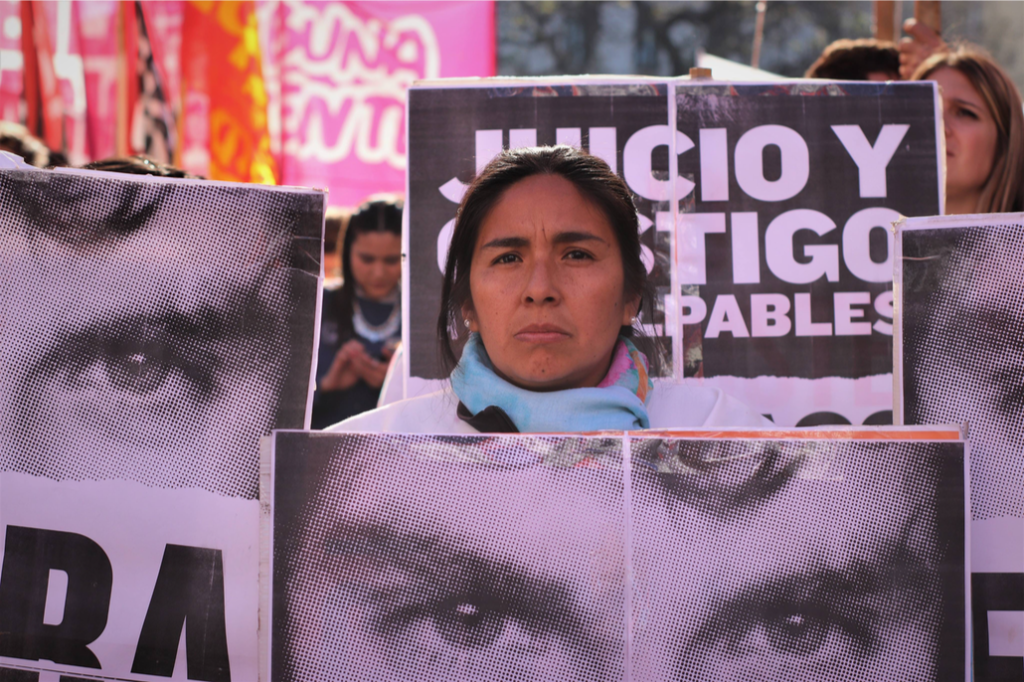
The Italian clothing multinational Benetton owns 5,000 stores in 210 countries and has an annual profit of 2 billion euros. It is the biggest private landowner in Argentina with 900,000 hectares (2.2m acres) over four provinces (Buenos Aires, Rio Negro, Chubut, and Santa Cruz), which it uses to raise sheep to produce 1.3 million kilos of wool per year for its clothing. Yet, the company does not only produce and sell clothing, it also owns media and controls a toll road company in Italy.
Benetton’s advertising portfolio is known for its mixture of provocation, progressivism, and multiethnicity (always featuring people from different backgrounds). Under the motto “United Colors of Benetton,” famous ads in the 1990s included an HIV-positive patient on his deathbed and a bloodsmeared newborn baby. The company also showed men and women from different countries and complexion, trying to concoct a strong message of tolerance and respect for diversity.
That neat, carefully-crafted image suffered its first blemish in Argentina in 2002. The Mapuche community of Santa Rosa Leleke, in Chubut, decided to return to and reclaim its ancestral lands – 625 hectares inside Benetton’s massive ranch in the southern province.
Very soon, the conflict became public. The company took legal action against the community for usurpation; Nobel Peace Laureate Adolfo Perez Esquivel then travelled to Italy with members of the community to serve as mediator in a meeting with company owner Luciano Benetton. The company offered the community 2,500 hectares in a different location, but a few months later a government body determined that the lands were unproductive and that communities dependent on subsistence farming could not survive there. In 2004, through a court order, the community was evicted from its ancestral territory.
In 2007, the community returned to the same place. Once again, they suffered criminalization, legal action, and threats. But the community resisted and has now been living for 10 years on the recovered territory.
Then history repeated itself again in 2015. This time, another community, Lof en Resistencia Cushamen, settled in a different portion of Benetton’s estate, with a different political approach and tactics, but the same stance against territorial plundering, and the same need to stay in their place.
Support independent journalism like this by becoming a subscriber on Patreon.
Unlike the previous conflicts in 2002 and 2007, Benetton chose to maintain a low-profile and hired the international lobbying and public relations agency Jeffrey Group to launch a media campaign at both the provincial and national level. “Violence, Anarchy, and Foreign Support: Profile of Two Mapuche Groups Keeping Argentina on Tenterhooks,” read the headline of an article by Martin Dinatale on Infobae, one of the most widely read news outlets in the country. Meanwhile, the Argentine newspaper Clarín warned, “(Mapuche authority) Jones Huala upped the stakes ⎯ he called for rebellion and armed struggle. From his prison cell, the Mapuche leader openly called for violent action.”
On Jan. 12-13, 2017, the border patrol and Chubut police attacked the Mapuche in at least three separate acts of repression. The news of one person seriously injured⎯a bullet in his neck⎯made it to the national press, and the Mapuche people made it to the capital city’s agenda. Still, most media insisted on demonizing the indigenous communities.
Border patrol and the Mapuches
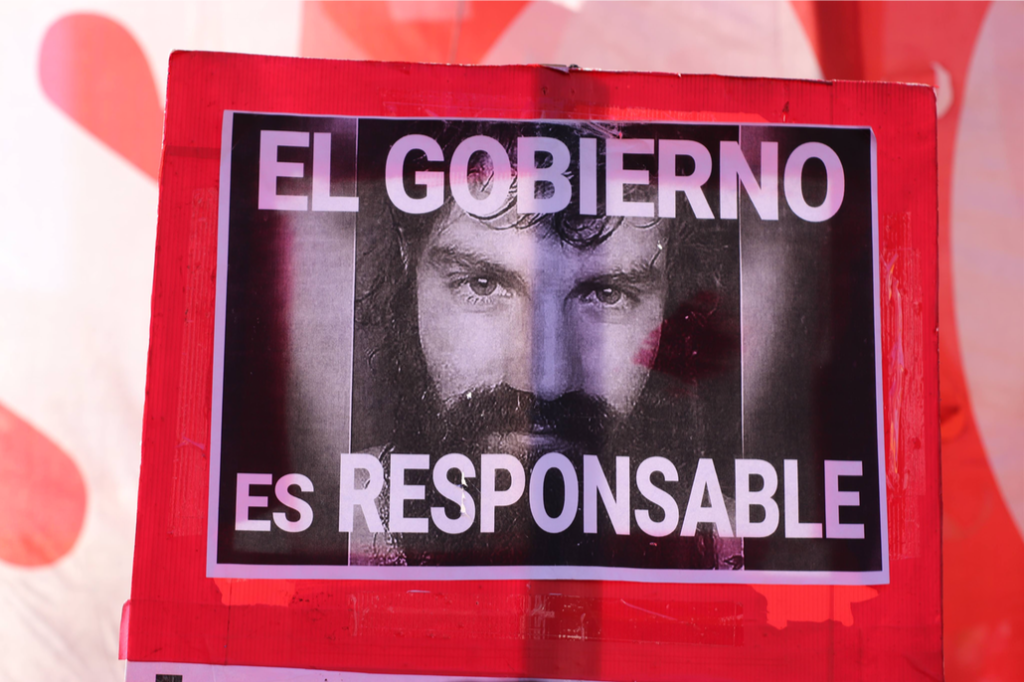
The border patrol is a force tasked with controlling the country’s borders, but different governments and judges have employed it for “internal security” purposes or against the civil population. During the Kirchnerist governments, the force patrolled poor neighborhoods and around railway stations throughout Greater Buenos Aires.
Under the Macri administration, the border patrol was transformed into a repressive shock force against the Mapuche people. Since 2016, the federal government and the provincial government of Chubut accused the organization Mapuche Ancestral Resistance (RAM) of terrorist actions, includingburning of property and theft. No member of the supposed organization ever appeared in public, and the governmental and corporate version claims that its leader is Facundo Jones Huala together with the community Lof en Resistencia Cushamen. But there are at least two other versions of events: first, that the RAM is made up of young people acting spontaneously through direct actions, or second, that it is an intelligence services organization operating in tune with the border patrol to deliberately trigger repression in Mapuche communities.
On Aug. 1 the border patrol struck against the Lof en Resistencia Cushamen once again. There were no more than 10 demonstrators on the national route 40, but dozens of agents chased them with shotguns, pick up trucks, and larger trucks. The border agents pushed into the community. While trying to escape, almost all the demonstrators crossed a small river. Santiago Maldonado, a 28-year-old activist and craftsman who was supporting the community in solidarity, did not make it to the other side.
He disappeared and was not seen again.
The Mapuche community reported Maldonado’s disappearance the same day. The Judicial power took days to begin the search and only after nine days later did judge Guido Otranto issue a search warrant of the border patrol detachments and the vehicles used during the raid against the community. Public defender Fernando Machado warned that the trucks had been washed to hide the evidence. The national government, in the words of Security Minister Patricia Bullrich, defended the procedures of the border patrol and even cast suspicion on the victim. Pro-government media spread the most unlikely versions – among them, that Maldonado was in Chile (and later, in another Argentine province).
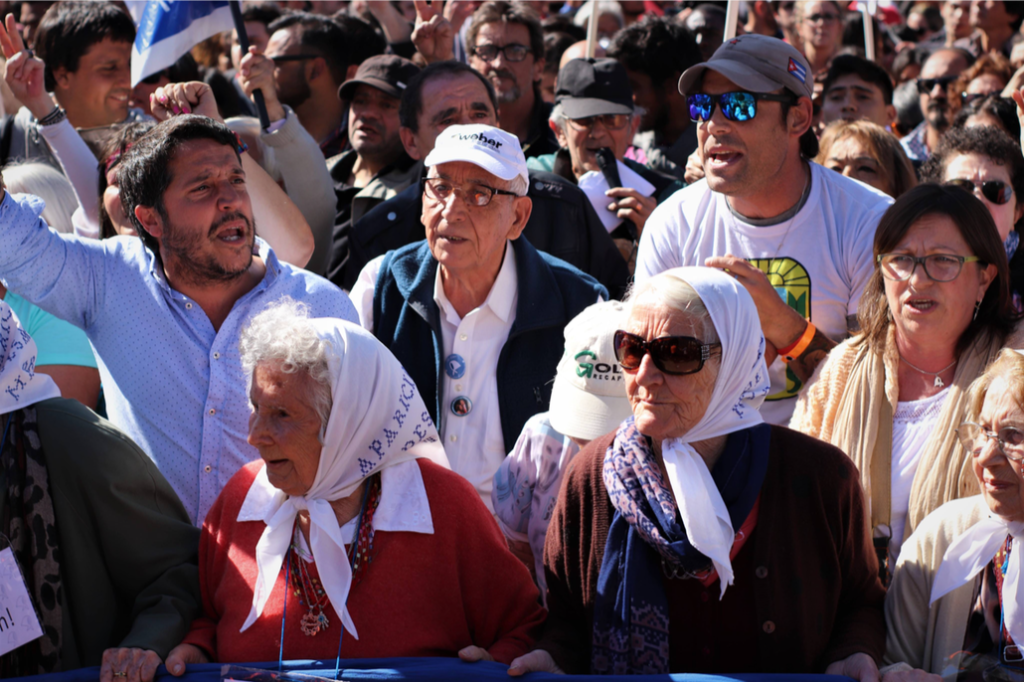
There were two separate, but complementary paths in the search for Santiago that the people took. The first, the judicial and bureaucratic path, including a change of judge and a complaint filed before the Inter-American Court on Human Rights. The other path led to the streets where the public expressed their popular discontent and outrage in two massive marches.On one of them, two months after Santiago’s disappearance, Santiago’s brother, Sergio Maldonado, read from the stage at one of the marches: “I would like to ask the highest authority of our country, mister President Mauricio Macri and all his ministers, where is Santiago Maldonado?”
A week before the legislative mid-term elections, the ruling party’s main candidate for the city of Buenos Aires, Elisa Carrió, stated without a doubt, “There is a 20 percent chance Maldonado is in Chile with the RIM (she meant RAM, the supposedly illicit Mapuche organization).” She never clarified where that version comes from or why a 20 percent.
Sergio Maldonado answered, “If Carrió has any evidence she should go to Justice, so we find Santiago in a 20 percent.”
On Oct. 18 Santiago Maldonado’s dead body was found floating in the Chubut river, in a very visible spot that had already been raked, as mandated by court order. The Mapuche community Lof en Resistencia Cushamen and the family both claimed that “the body was planted.” All eyes turned to the border patrol. On Saturday, a massive mobilization flooded Buenos Aires’ central Plaza de Mayo, demanding justice for Maldonado and criticizing Macri’s government.
But just a day later, Argentines took to the polls for midterm elections. The governing party won almost all across the country, locking in Macri’s agenda for the rest of this term and very likely a second. Despite the fact that Santiago Maldonado’s name was repeated by social movements across the country and around the world for three months, the forced disappearance and murder has not siphoned votes away from Argentina’s neoliberal and repressive status quo.
This article was translated by Nancy Piñeiro, an editor at Upside Down World and professional translator.
Darío Aranda is an Argentinian journalist who travels across the country documenting and denouncing the advance of the extractivist model and participating in campesino and Indigenous struggles. He writes for Pagina/12 and MU, among others, and is author of Argentina originaria (LaVaca, 2010) and Tierra Arrasada (Sudamericana, 2015).
Copyright, Upside Down World. May not be reprinted without permission.

